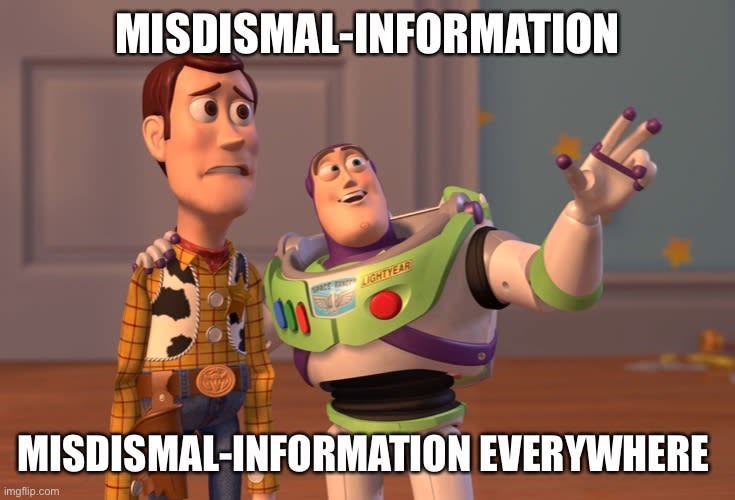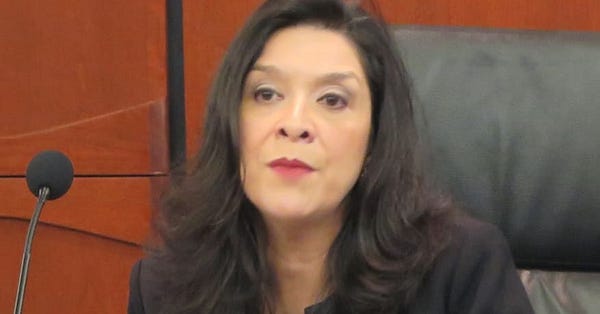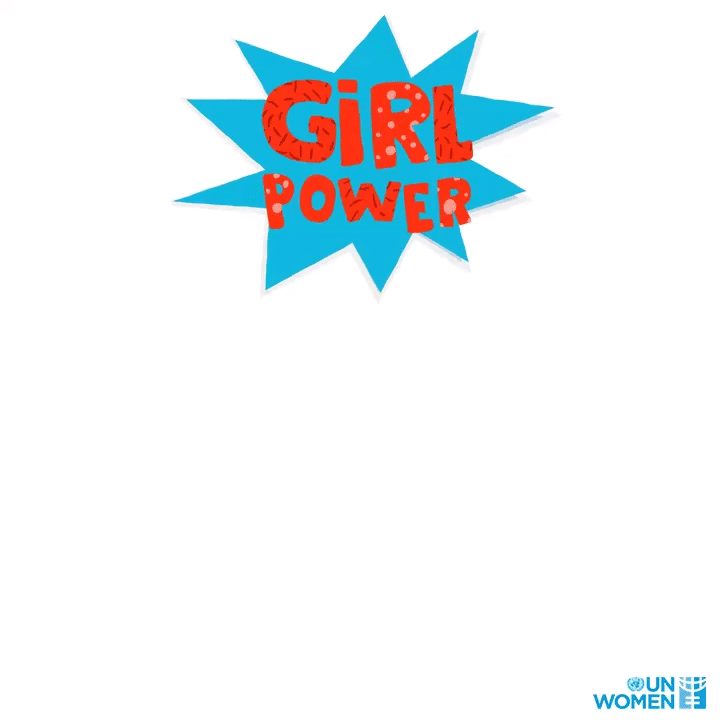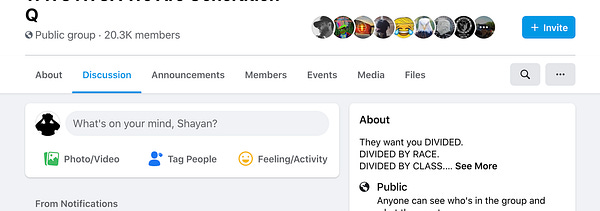Of Men-dacious and Dangerous Speech, QAn(o)on, Mail privilege and How to lose the information war.
MisDisMal-Information Edition 11
Edition 11
Of Men-dacious and Dangerous Speech, QAn(o)on, Mail privilege and How to lose the information war.
Feedback time!
Thank you for being a reader/subscriber. To help me improve this newsletter / tune it more towards your preferences, please do fill out this short feedback form. (5 questions only)
I've tried my best to minimise information collection and mandatory questions
What is this?This newsletter aims to track information disorder largely from an Indian perspective. It will also look at some global campaigns and research
What this is not?A fact-check newsletter. There are organisations like Altnews, Boomlive etc who already do some great work. It may feature some of their fact-checks periodically

Welcome to Edition 11 of MisDisMal-Information
Men-dacious and Dangerous Speech
Over the weekend, there was disturbing news from the US involving a fatal shooting in a federal judge's home.


The primary suspect is an 'anti-feminist' attorney. This unfortunate incident has (once again) brought focus on how society treats women in public and private places. But, of course, on Twitter we never have to look very far for instances of this. Case-in-point, this tweet from the anonymous handle LifeMathMoney (I do want to apologise for including the language it uses, I did consider blackening it out but it is necessary to include it to demonstrate the point(s) I am trying to make)

I have only interacted with this account twice in my time on Twitter. Once when it was recommended by one of the Flipkart Bansal's (sorry, I don't remember which one) and then again this past week. And obviously, a lot of people were enraged. This tweet was dunk-tweeted (it still baffles that well meaning people do that and end up amplifying it), sub tweeted, reported, followers were called out (not always explicitly) etc. Honestly, the kind of following this account has baffles me even more, but that is a topic for another day.
There was, unfortunately no shortage of support, nodding in agreement etc too. The account doubled down on its message - which was cheered too. I reported the tweet, hoped it would make some difference and moved on to something else (Narrator's voice: It didn't).
I checked the tweet a few days later, and well...

If you read the de-platforming section of Edition #10, or even the Stop Funding Hate / Opindia episode, then this shouldn't be unexpected. It remains to be seen whether this 'bump' is just a short-term or not. I should point out that I'm making an assumption that this indeed happened, and is merely not posturing. h/t to @aldebaran14 for raising this possibility
If you're wondering why I am rambling about this, well, let me take back you to Edition #6 where I included some preliminary analysis of tweets pertaining to a hashtag about male nurses.
Ever since then, I have, occasionally visited MRA (Men's Rights Activists) Twitter and a few websites as well.
Why? Because I wanted to understand the nature of discourse better. Again, Why? From my admittedly limited and outsider view, I observed similarities in the nature of this discourse, and the anti-minority language in use. Basically, anything that paints women in a negative light, or can be used to portray men as victims is used. The complaints centre around false cases, gender biased laws (legalterrorism is an oft-used hashtag) and the 'Indian family' being under threat (this is not exhaustive).
I am going to include a few sample headlines from a few different sites here (no links, since I do not want to amplify).







And the badgering/whataboutery on display accompanying this tweet by a UN handle that explicitly advocates gender equality sums it up.


This is a relatively sanitised example, there are obviously others which are much worse
If one looks at this from the lens of the dangerous speech framework, lot of the examples we've addressed so far would qualify.

And just this week, GMFUS came out with a case-study detailing how Greta Thunberg is being targeted.
In some cases, reporting and factchecking of mis/ disinformation narratives led to their amplification. The findings suggest that platforms cannot tackle the problem of conspiracy theory and disinformation one by one, country by country, since disinformation moves across platforms and countries It also points to the confluence of interests and groups in spreading disinformation, and its ability to undermine the credibility of trusted influencers. The findings reveal a key role of satire out of context in spreading disinformation as well as the role of the mainstream media
Now, here's the troubling part, there is no fixed model of counter speech that works. We've seen calling out/censorship/cancellation can have the opposite effect. (Here's an Axiosarticle on a study which claims that hate speech in the US is 3-4 times higher than it normally is. Add salt to taste)
But there are times when it does work too. And ignoring such speech because it appears to be 'fringe' does't deprive them of 'oxygen' quite in the way we would expect it to. QAnon is an example of this. I'll leave this section with this - we can only hope to reach a solution when we start going beyond the first order. Currently, most public discourse is a step-behind, but at least, it seems to be moving forward.
Twitter laying down the QAno(o)n.
Sorry, that title relies a little bit on Hindi/Urdu, phonetically read, Q(k)anoon translates to 'law'

Another thing that people have been calling on Twitter to do, finally happened. It banned 7K accounts, and limited another 150K. This means that both Facebook and Twitter have acted against 'domestic campaigns' in the United States now. The rest of us still have to wait.

Meanwhile, Shayan Sardarizadeh points out that QAnon will likely just focus on Facebook and find workarounds to post content on Twitter.


Rachel Lerman and Elizabeth Dwoskin expect that this action from Twitter will result in increased pressure on other platforms to follow suit (this is something that Rohan Seth and I had laid out in our report as well subtle plug). And Facebook has started labeling content from Trump and Biden. It still isn't fact-checking, as Mark Zuckerberg is quoted in a CNN report:
"This isn't a judgment of whether the posts themselves are accurate, but we want people to have access to authoritative information either way,"
The other notable aspect of this QAnon espisode is the coinage of a new term 'Coordinate Harmful Activity'. It is only fair that I go over to Evelyn Douek who has already expressed concerns over Facebook's Coordinated Inauthentic Behaviour being used as if it represents some kind gf objective truth. As we've seen in previous editions, it does not. And neither does Coordinated Harmful Activity. It will serve us well to remember that.


Before I move on from this section, let me toy with your emotions just a bit. This is essentially a de-platforming exercise and we have covered how hard it is to determine whether that works or not. Well, here is Melissa Ryan (who tracks Right Wing groups) contending that it does indeed work.

The Indian Internet
Ben Thompson of Stratechery wroteabout the 4 models of the internet.
The US model (laissez-faire)
The EU model (restricting the size of the castle even as it dramatically increases the moat)
The China model (control over the information)
The Indian model (invest in Jio Platforms)
It is a fascinating post, and I do recommend reading it. Though, not everyone agrees. Benedict Evans, for one, certainly does not.


It also appears that India's TikTok ban is catching on. Both the US and Pakistan are mulling banning albeit for different reasons.
Too Tweet to handle and Mail Privilege.
While we are talking about an Indian Internet, let me sprinkle in some not-so-good-news (because that's what I do).
During a hearing for a case pertaining to some tweets by Prashant Bhushan where he criticised the Supreme Court (this op-ed from Indian Express provides some opinionated background), Twitter's counsel voluntary offered to 'disable' the tweets if the company was ordered to do so - or - even if it wasn't.

In a simultaneously related, yet unrelated incident, Facebook submitted to the court that it does have measures in place to detect 'fake news', hate speech and objectionable content. It also said that it cannot block groups like 'boislockerroom' since it requires them to
"determine whether a group is illegal“ which necessarily requires a judicial determination “and also compels them to monitor and adjudicate the legality of every piece of content on their platforms".
It also became clear that the FridayForFuture's website (one of the 3 that were blocked in early July) was blocked based on orders by Delhi Police. Akshay Deshmane's article in The Huffington Post details how the initial order invoked UAPA, but this was 'immediately' revoked 4 days later and then the IT Act was cited. Apparently their climate activism..well..this section from IFF's post sums it up. I guess public officials enjoy mail privileges.
After receiving a complaint from Mr. Javadekar, the Delhi Police conducted some kind of investigation which allegedly revealed that emails were being sent "mainly" from the FFF website. This sending of emails to a public official has been characterized by the Delhi Police as an act which which “may disturb peace, sovereignty of India” and it has also been alleged that the FFF website displays “objectionable contents and unlawful activities or terrorist act, which are dangerous for the peace, tranquillity and sovereignty of the India (sic)” and contains “religious hatred content/material.”
Arrest them all.
This week, let's put this section under Indian Internet.
A student in Assam was arrestedfor a 'fraudulent post' purportedly from the Chief Minister appealing for donations towards flood relief.
Another interesting story from Assam. While not quite about arrests, it seems to fit here. NorthEastNow is involved in a tussle over what it claims was an incorrect fact-check by authorities in Assam.
Back to arrests now, a teenager was detained for posting a tweet about a 7-day lockdown in Tripura. And in other instance posting indecent remarks and photographs about the Mathura community lead to an arrest after a complaint by the Chief Minister's office,
Some other important reads from the 'Indian Internet'
Salman Anees Soz writes in the New Indian Express that 'Denying the truth will hurt India'
Anil Singh in the Free Press Journal on the need to regulate Social Media.
The News Minute has (at least) 2 (1) (2) must read articles on the News18 Tamil fracas in Tamil Nadu.
Prateek Goyal and Anna Priyadarshini cover the Technisant report claiming disinformation networks were at work around the Galwan Valley conflict to fuel tensions. (I wrote about this report in Edition #8, none of those questions appear to be answered even now)
And here is a timeline of what happened when a Union Minister claimed that a 'papad' may help in developing antibodies and fighting COVID-19.

How to lose the information war
Let's start this section with a review of Nina Jankowicz's book (same name as this section).
2 big reports from the UK this week.
Lawmakers cited Trump and Bolsanoro's COVID-19 escapades as one of many reasons for 'fake news regulation'. The complete report from the Digital, Culture, Media and Sport Committee has been published online and directs its recommendations to both Tech Platforms and the Public Sector.
The Intelligence and Security Committee also published its 'Russia Report'. The Register has a rather sceptical take on it.
Let's shift focus to China. The Internet Observatory at Stanford which has been monitoring China related activity on the internet published a white paper detailing China's information operations across Hong Kong, Taiwan and COVID-19.
China’s overt propaganda apparatus is robust, and managing both inward and outward-facing messaging remains a top priority for the CCP.
China’s overt messaging efforts span both broadcast and social media.
China also has less-attributable or unattributable communication options that it can draw on to influence opinions.
While China and Russia overlap in capabilities, there are important differences in their goals, strategy, and tactical execution.
Kate Starbird writes "Disinformation Campaigns Are Murky Blends of Truth, Lies, and Sincere Beliefs – Lessons from the Pandemic"
History teaches that this blending of activism and active measures, of foreign and domestic actors, and of witting and unwitting agents, is nothing new. And certainly the difficulty of distinguishing between these is not made any easier in the connected era. But better understanding these intersections can help researchers, journalists, communications platform designers, policymakers and society at large develop strategies for mitigating the impacts of disinformation during this challenging moment.
Alexei Abrahams and Gabrielle Lim have a fascinating take on lessons that one can draw from the war on terror in the context of addressing information disorder. Repress/redress: what the “war on terror” can teach us about fighting misinformation
Consequently, we predict that the war on misinformation, like the war on terror, will substantially be a war on symptoms — protracted and futile. In tandem with palliative measures, we advocate for a concerted effort to redress root grievances and restore faith in our political system.
You're still here? Sorry - no feel good story this time. Hey, I said it wasn't going to be a regular feature. Didn't I? But since you are : don’t forget the feedback form!






Very well researched and an interesting Read